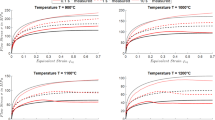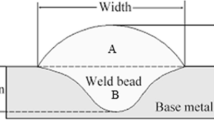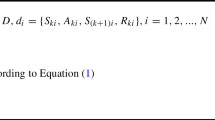Abstract
About 95% of all steel products are rolled at least once during their production. Thus, any further improvement of the already highly optimized rolling process, for example reduction of energy consumption, has a significant impact. Currently, most rolling processes are designed by experts based on their knowledge and heuristics using fast analytical rolling models (FRM). However, due to the complex interactions between the processing constraints e.g. machine limits, the process parameters as well as the product properties, these manual process designs often focus on a single optimization objective. Here, novel methods such as reinforcement learning (RL) can detect complex correlations between chosen parameters and achieved objectives by interacting with an environment i.e. FRM. Therefore, this contribution demonstrates the potential of coupling RL and a FRM for the design and multiple objective optimization of rolling processes. Using FRM data e.g. the microstructure evolution, the coupled approach learns to map the current state, such as the height, to process parameters in order to maximize a numerical value and thereby optimize the process. For this, an objective function is presented that satisfies all (technical) constraints, leads to desired material properties including microstructural aspects and reduces the energy consumption. Here, two RL algorithms, DQN and DDPG, are used to design and optimize pass schedules for two use cases (different starting and final heights). The resulting pass schedules achieve the desired goals, for example, the desired grain size is achieved within 4 µm on average. These meaningful solutions can prospectively enable further improvements.
J. Lohmar: Deceased
Access this chapter
Tax calculation will be finalised at checkout
Purchases are for personal use only
Similar content being viewed by others
References
Allwood, J.M., Cullen, J.M., Carruth, M.A.: Sustainable materials. With both eyes open; [future buildings, vehicles, products and equipment - made efficiently and made with less new material]. UIT Cambridge, Cambridge (2012)
Scheiderer, C., et al.: Simulation-as-a-service for reinforcement learning applications by example of heavy plate rolling processes. Proc. Manuf. 51, 897–903 (2020). https://doi.org/10.1016/j.promfg.2020.10.126
van Hasselt, H., Guez, A., Silver, D.: Deep reinforcement learning with double Q-learning (2015)
Silver, D., Lever, G., Heess, N., Degris, T,. Wierstra, D., Riedmiller, M.: Deterministic Policy Gradient Algorithms Proceedings of the 31 st International Conference on Machine Learning, 32. Aufl, Beijing, China, S 387–395 (2014)
Beynon, J.H., Sellars, C.M.: Modelling Microstructure and Its Effects during Multipass Hot Rolling. Iron Steel Inst. Jap. 32(3), 359–367 (1992)
Seuren, S., Bambach, M., Hirt, G., Heeg, R., Philipp, M.: Geometric factors for fast calculation of roll force in plate rolling. In: Zhongguo-Jinshu-Xuehui (Hrsg) 10th International Conference on Steel. Metallurgical Industry Press, Beijing (2010)
Lohmar, J., Seuren, S., Bambach, M., Hirt, G.: Design and application of an advanced fast rolling model with through thickness resolution for heavy plate rolling. In: Guzzoni, J., Manning, M. (Hrsg) 2nd International Conference on Ingot Casting Rolling Forging. ICRF (2014)
Jonsson, M.: An investigation of different strategies for thermo-mechanical rolling of structural steel heavy plates. ISIJ Int. 46(8), 1192–1199 (2006). https://doi.org/10.2355/isijinternational.46.1192
Pandey, V., Rao, P.S., Singh, S., Pandey, M.: A calculation procedure and optimization for pass scheduling in rolling process. A Rew. 126–130 (2020)
Svietlichnyj, D.S., Pietrzyk, M.: On-line model for control of hot plate rolling. In: Beynon, J.H. (Hrsg) 3rd International Conference on Modelling of Metal Rolling Processes. IOM Communications, London, S 62–71 (1999)
Schmidtchen, M., Kawalla, R.: Fast Numerical simulation of symmetric flat rolling processes for inhomogeneous materials using a layer model—part I. Basic Theory. Steel Res. Int. 87(8), 1065–1081 (2016). https://doi.org/10.1002/srin.201600047
Hong, C., Park, J.: Design of pass schedule for austenite grain refinement in plate rolling of a plain carbon steel. J. Mater. Process. Technol. 143–144, 758–763 (2003). https://doi.org/10.1016/S0924-0136(03)00363-7
Chakraborti, N., Siva Kumar, B., Satish Babu, V., Moitra, S., Mukhopadhyay, A.: A new multi-objective genetic algorithm applied to hot-rolling process. Appl. Math. Model. 32(9), 1781–1789 (2008). https://doi.org/10.1016/j.apm.2007.06.011
Özgür, A., Uygun, Y., Hütt, M.-T.: A review of planning and scheduling methods for hot rolling mills in steel production. Comput. Ind. Eng. 151(20), 106606 (2021). https://doi.org/10.1016/j.cie.2020.106606
Rosenblatt, F.: The perceptron. A probabilistic model for information storage and organization in the brain. Psychol. Rev. 65(6), 386–408. (1958). https://doi.org/10.1037/h0042519
Sutton, R.S., Barto, A.: Reinforcement Learning. An Introduction. Adaptive Computation and Machine Learning. The MIT Press, Cambridge, MA, London (2018)
Mahadevan, S., Theocharous, G.: Optimizing Production Manufacturing Using Reinforcement Learning FLAIRS conference, Bd 372, S 377 (1998)
Wuest, T., Weimer, D., Irgens, C., Thoben, K.-D.: Machine learning in manufacturing. Adv. Chall. Appl. Prod. Manuf. Res. 4(1), 23–45 (2016). https://doi.org/10.1080/21693277.2016.1192517
Gamal, O., Mohamed, M.I.P., Patel, C.G., Roth, H.: Data-driven model-free intelligent roll gap control of bar and wire hot rolling process using reinforcement learning. IJMERR 349–356 (2021). https://doi.org/10.18178/ijmerr.10.7.349-356
Acknowledgement
Funded by the Deutsche Forschungsgemeinschaft (DFG, German Research Foundation) under Germany ́s Excellence Strategy – EXC-2023 Internet of Production – 390621612. We thank Kuan Wang for supporting us in conducting the trainings.
We heartily thank our colleague Dr.-Ing. Johannes Lohmar for his encouragement and for his timely support, guidance and suggestions during this project work.
Author information
Authors and Affiliations
Corresponding author
Editor information
Editors and Affiliations
Rights and permissions
Copyright information
© 2023 The Author(s), under exclusive license to Springer Nature Switzerland AG
About this paper
Cite this paper
Idzik, C., Gerlach, J., Lohmar, J., Bailly, D., Hirt, G. (2023). Application of Reinforcement Learning for the Design and Optimization of Pass Schedules in Hot Rolling. In: Liewald, M., Verl, A., Bauernhansl, T., Möhring, HC. (eds) Production at the Leading Edge of Technology. WGP 2022. Lecture Notes in Production Engineering. Springer, Cham. https://doi.org/10.1007/978-3-031-18318-8_8
Download citation
DOI: https://doi.org/10.1007/978-3-031-18318-8_8
Published:
Publisher Name: Springer, Cham
Print ISBN: 978-3-031-18317-1
Online ISBN: 978-3-031-18318-8
eBook Packages: EngineeringEngineering (R0)




